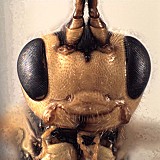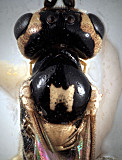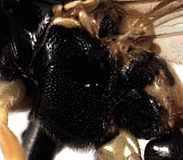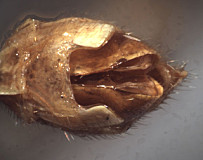Physotarsus truncatus Zhaurova, 2009
Physotarsus truncatus is one of several species with a black and yellow mesosoma, distinctly punctate mesopleuron, and a sparsely to impunctate mesoscutum. It is nearly identical to P. cordatus Zhaurova and P. emarginatus Zhaurova, but the mesoscutum and mesopleuron are more extensively black in P. truncatus. This species is nearly identical to P. cordatus, with differences in the male subgenital plate and minor differences in color. Since primary differences are associated with the male, the sole male of P. truncatus was chosen as holotype. Both species were collected from the same locality in central Texas.
There are no specimens currently determined for this OTU, or those specimens determined for this OTU are not yet mappable.
This material is based upon work supported by the National Science Foundation under Grant Number DEB 0328922 with REU supplement DEB 0723663.
Any opinions, findings, and conclusions or recommendations expressed in this material are those of the author(s) and do not necessarily reflect the views of the National Science Foundation.






